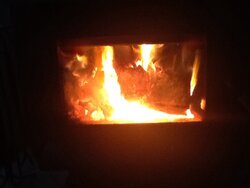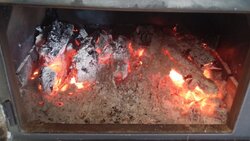Greg67
Member
Our Princess this morning. It's been really cold and windy here in IN. The stove can still keep the house warm we just have to run it at a higher setting. It's our first year with it and we are very pleased with it. Only one small problem with the stove when we bought it and BK sent the part to us without any hassle. The stove was set on about 2.25 when the pic was taken,the cat thermometer was at about the 11 o'clock position. Our wood supply is a mix of oak,cherry,maple, and ash right now. Can't say enough good thing
 about this website and this stove.
about this website and this stove.
 about this website and this stove.
about this website and this stove.



 Why does the stove need to cool off to remove the ash?
Why does the stove need to cool off to remove the ash?